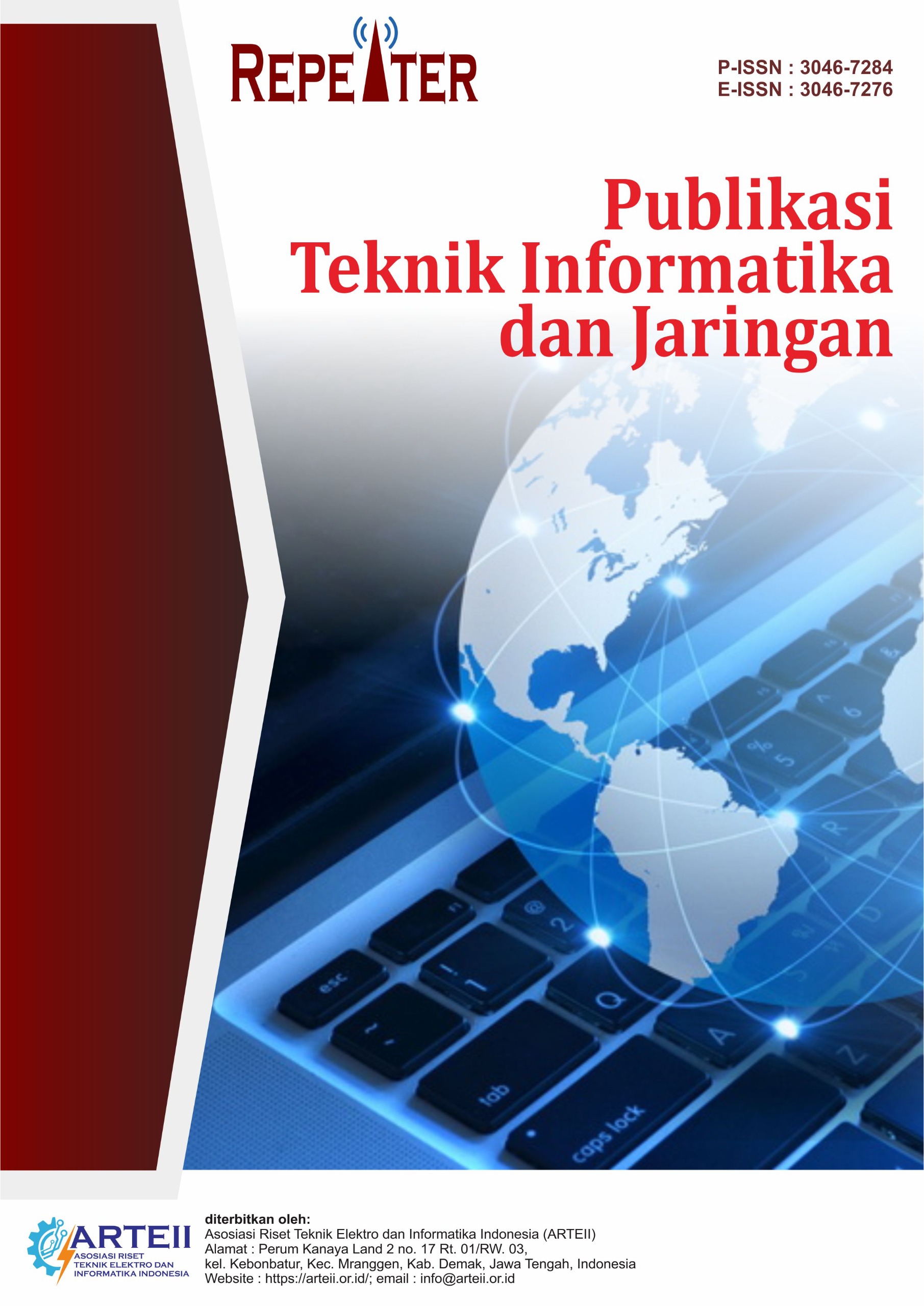Pengelompokan Data Penerima Bantuan untuk Disabilitas di Kota Binjai Menggunakan Metode Clustering Algoritma K-Means
DOI:
https://doi.org/10.62951/repeater.v2i4.207Keywords:
Data mining, Disability Assistance, k-means algorithmAbstract
In Indonesia, people with disabilities are often overlooked and underestimated because they do not have perfect physical abilities to do certain jobs or activities. The majority of them come from underprivileged families and are often underdeveloped. The unstructured process of distributing assistance can result in the assistance provided is not in accordance with the needs, so it is not optimal in improving the welfare of persons with disabilities. In addition, without a clear grouping, it is difficult for the government to design a more specific and targeted assistance program. Therefore, to overcome this problem, the agency needs to have an additional system to be able to assist in overcoming the problem of disability assistance recipients, namely by using the clustering method to group beneficiary data based on age, type of disability, and type of assistance. Thus, this clustering is expected to provide information and a clearer picture of the needs of each disability group, so that the assistance program provided can be distributed more optimally according to what people with disabilities need. After calculating using the existing cluster formula4, iteration 2 is the same as in iteration 1 and there is no data that moves groups anymore so the calculation can be stopped. So that a cluster graph can be made grouping data on beneficiaries of assistance for disabilities in Binjai City using the K-Means algorithm clustering method.
Downloads
References
Abdul, S. A., Defit, S., & Yunus, Y. (2021). Klasterisasi Dana Bantuan Pada Program Keluarga Harapan (PKH) Menggunakan Metode K-Means. Jurnal Informatika Ekonomi Bisnis, 3(2), 53–59. https://doi.org/10.37034/infeb.v3i2.66
Arhami, M., & Nasir, M. (2020). Data Mining: Algoritma dan Implementasi (1st ed.). ANDI OFFSET.
Arianti, A. R., Novriyenni, & Ambarita, I. (2023). The Grouping Of Types Of Tax Revenue In Binjai City Uses The K-Means Clustering Method Algorithm. Journal of Artificial Intelligence and Engineering Applications (JAIEA), 3(1), 197–202. https://doi.org/10.59934/jaiea.v3i1.286
Efori Buulolo, S. Kom. , M. Kom. (2020). DATA MINING (1st ed.). CV Budi Utama.
Hakim, L. N. (2020). The Urgency of The Elderly Welfare Law Revision. Aspirasi: Jurnal Masalah-Masalah Sosial, 11(1), 43–55. https://doi.org/10.22212/aspirasi.v11i1.1589
Hermawati, F. astuti. (2013). Data mining (1st ed.). CV Andi Offset.
Hikmat, H. (2021). Pedoman Operasional Asistensi Rehabilitas Sosial Penyandang Disabilitas (1st ed., Vol. 1). ATENSI.
Ikhwan, A., & Aslami, N. (2020). Implementasi Data Mining Untuk Manajemen Bantuan Sosial Menggunakan Algoritma K-Means. Jurnal Teknologi Informasi, 4(2).
Jelita, T., Buaton, R., Simajuntak, M., & Kaputama, S. (2023). Pengelompokan Bidang Usaha Terhadap Bantuan Produktif Usaha Mikro (BPUM) Berdasarkan Wilayah Deli Serdang Menggunakan Metode Clustering K-Means (Studi Kasus: Dinas Koperasi Dan UMKM Kabupaten Deli Serdang). In Journal of Computer Science and Information Technology E-ISSN (Vol. 3, Issue 2).
Juliawati, F., Buaton, R., Saragih, R., & Kaputama, S. (2023). Pengelompokan Data Mining Penerimaan Bantuan Pangan Non Tunai (BPNT) Menggunakan Metode Clustering (Studi Kasus : Kantor Desa Payabakung Hamparan Perak). In Journal of Computer Science and Information Technology E-ISSN (Vol. 3, Issue 2).
Oton Kadang, M. (2021). Algoritma dan pemrograman (A. K. Muzakkir, Ed.; 1st ed., Vol. 1, Issue 1). Humanities Genius.
Reefani, N. K. (2016). Panduan mendidik anak berkebutuhan khusus (A. Kholil, Ed.; 1st ed., Vol. 1). Imperium.
Relita Buaton, Zarlis, M., Efendi, S., & Yasin, V. (2019). Data Mining Time Series (Wade, Ed.; 1st ed., Vol. 1). Wade Group.
Sahputri, D., Maulita, Y., & Novriyenni. (2023). Data Mining Using K-Means Clustering Algorithm To Know Students’ Interests And Talents In Extracurricular Activities (Case Study: SMK Setia Budi Binjai). Journal of Engineering, Technology and Computing, 2(3), 107–115.
Setiyani, L., Wahidin, M., Awaludin, D., & Purwani, S. (2020). Analisis Prediksi Kelulusan Mahasiswa Tepat Waktu Menggunakan Metode Data Mining Naïve Bayes : SYSTEMATIC REVIEW. Faktor Exacta, 13(1), 35–43. https://doi.org/10.30998/faktorexacta.v13i1.5548
Sholeh, A. (2015). Telaah Hak Aksesibilitas Penyandang Disabilitas dalam Sistem Pendidikan di Indonesia. PALASTREN, 8(2), 293–320.
Taruk, A., Politeknik, A., & Pemasyarakatan, I. (2022). Nusantara: Jurnal Ilmu Pengetahuan Sosial Penyandang Disabilitas Di Indonesia 1. Jurnal Ilmu Pengetahuan Sosial, 9(2), 807–812. https://doi.org/10.31604/jips.v9i2.2022.807-812
Wakhidah, N. (2010). Clustering Menggunakan K-Means Algorithm (K-Means Algorithm Clustering). Jurnal Transformatika, 8(1), 1–8.
Werdiningsih, I., Novitasari, D. C. R., & Zatusiva Haq, D. (2022). Pengolahan Data Mining dan Pemrograman Matlab.pdf (1st ed.). Airlangga University Press.
Zai, C. (2022). Implementasi Data Mining Sebagai Pengolahan Data. Portaldata.Org, 2(3), 2022–2023.
Downloads
Published
How to Cite
Issue
Section
License
Copyright (c) 2024 Repeater : Publikasi Teknik Informatika dan Jaringan

This work is licensed under a Creative Commons Attribution-ShareAlike 4.0 International License.





